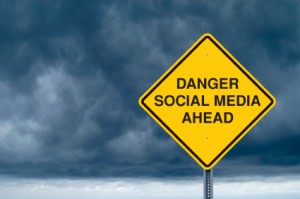Local, Personal, Social, and Always On
 The Boston Consulting Group (BCG) just published a new study that compares 16 industries in their ability to deliver digital satisfaction to American consumers. What’s the worst industry? The telco/cable industry is at the bottom of the heap. What’s the best industry? Surprise … it’s personal banking.
The Boston Consulting Group (BCG) just published a new study that compares 16 industries in their ability to deliver digital satisfaction to American consumers. What’s the worst industry? The telco/cable industry is at the bottom of the heap. What’s the best industry? Surprise … it’s personal banking.
BCG surveyed 3,135 consumers in March 2013 and measured satisfaction with 17 different digital “interactions”. These were grouped into four broad categories:
- Research – interactions include the ability to find information quickly and easily, the ability to find better prices, etc.
- Transactions – the ease of making the transaction, the ability to buy what I need, etc.
- Post-transaction activities – including social features, customized communication, and mobile access.
- Other – including quick access to help and the degree to which I trust this transaction.
The researchers asked consumers to rate each interaction in two ways: 1) how important is it?; 2) how satisfied are you with it? With these data, we can compare expectations and how well those expectations are met.
The researchers crunched all the data and compiled the 16 industries into four categories:
Leaders – consumers had high expectations of leaders and, by and large, their expectations were met. In general, the leaders scored well across all four interaction categories, from beginning to end. (Actually, the process never really ends). The four leading industries are (in order) personal banking, online merchants, media retail, and electronics retail. Personal banking leads by a wide margin, with a total satisfaction score of 15.2, compared to 11.8 for online merchants, the second ranking industry.
Aspirants – these industries do well on the research interactions but lag on the transaction and post-transaction categories. In other words, they get off to a good start but don’t follow through well. Consumers are not displeased with aspirant performance but think it could be improved. Industries in this category are: apparel retail, airlines, investments, and hotels.
Sleepers – consumers have low (digital) expectations of sleeper industries … and those expectations were fulfilled. Sleeper industries are: supermarkets, automobiles, and real estate.
Laggards – consumers have higher expectations of laggards (than of sleepers) but low satisfaction. Laggards fall behind in all interaction categories, from research to post-transaction. Laggards include: utilities, government services, health care providers, insurance, and (worst of the worst) telco and cable
Consumers want the digital experience to offer more than the physical experience. Digital might offer more options, more information, better prices, or more convenience. It might even be fun. Generally, consumers “expect the digital experience to be local (recognizing where they are), personal (tailored to their individual needs and preferences), social (shared with their friends) – and always on.”
The study also points to the growing importance of mobile access. Roughly half of Millennials (born 1980 – 2000) use mobile devices while shopping. For older consumers, the rate is approximately one-fifth. Mobile access enables two key trends:
Showrooming – check out the merchandise in a brick-and-mortar retail outlet, then compare prices and buy online.
Omnichannel – use the entire array of online, mobile, virtual, social, and real world channels to make a buying decision.
As the authors point out, the purchasing process is no longer linear; it’s now fluid and dynamic. To succeed, companies will need to enhance satisfaction through the entire range of interactions and do it through all channels. It’s a daunting challenge. The reward, however, is a slice of the $450 billion e-commerce market that BCG projects by 2016.